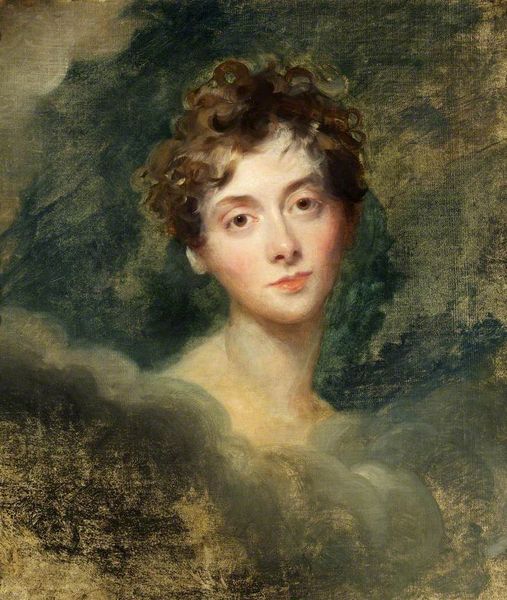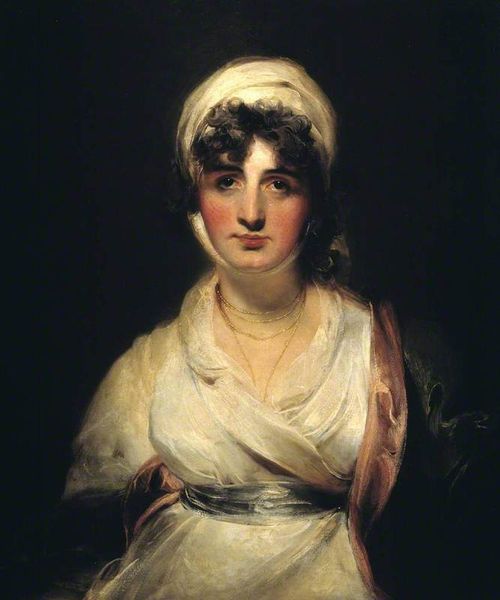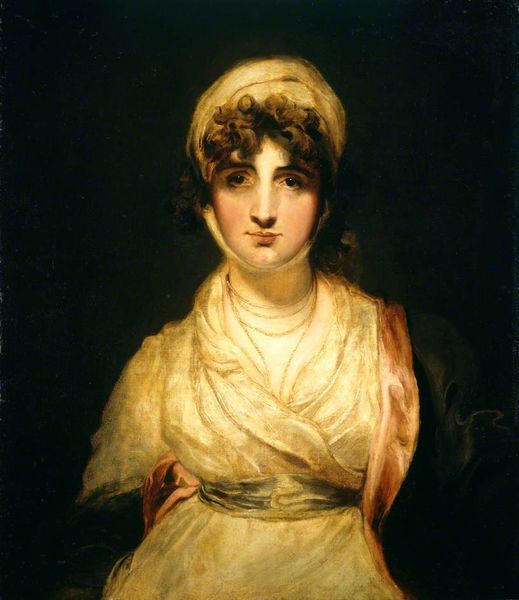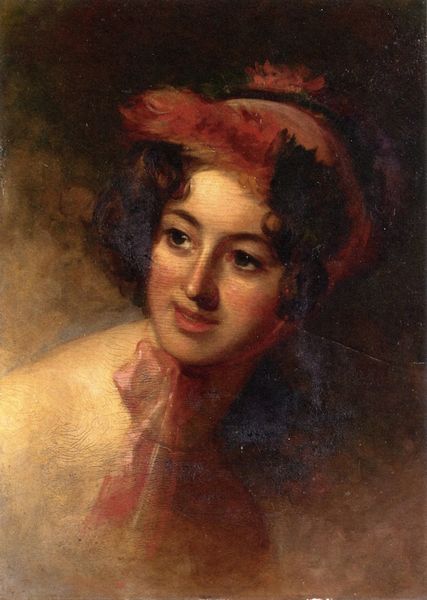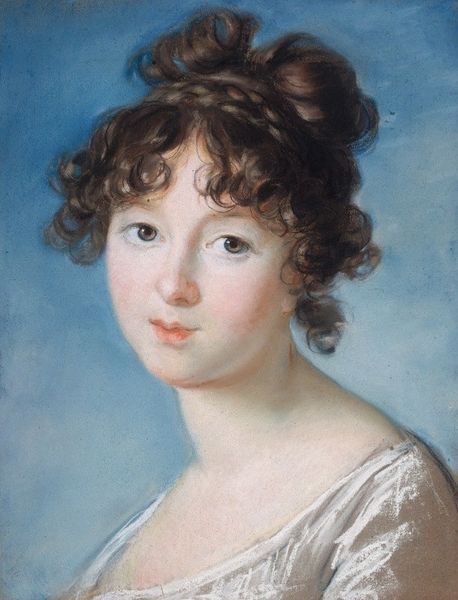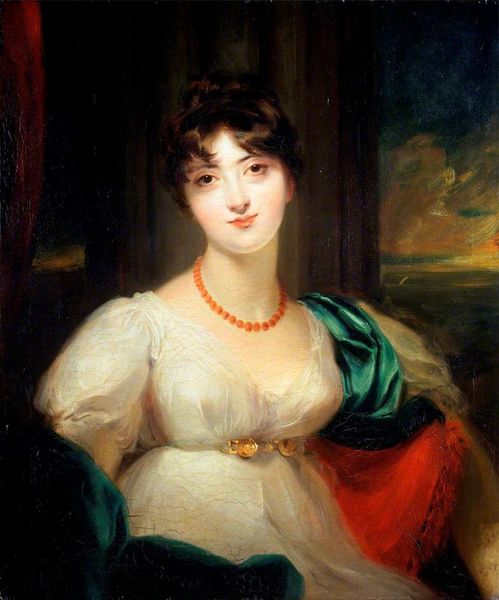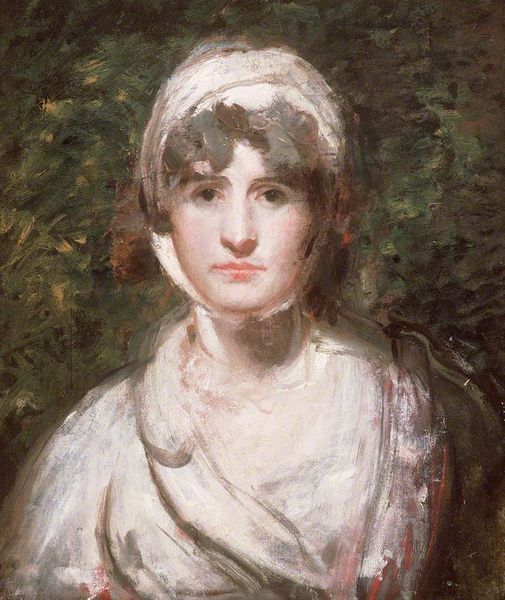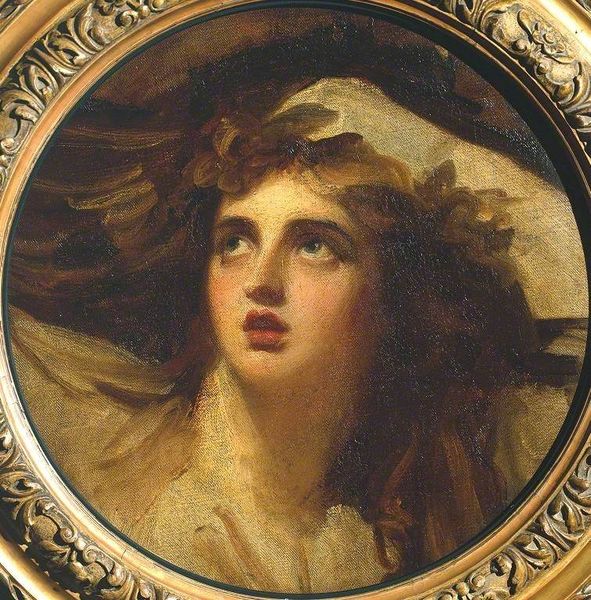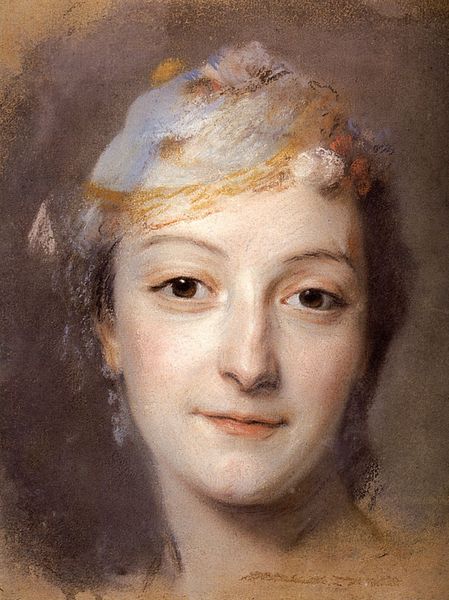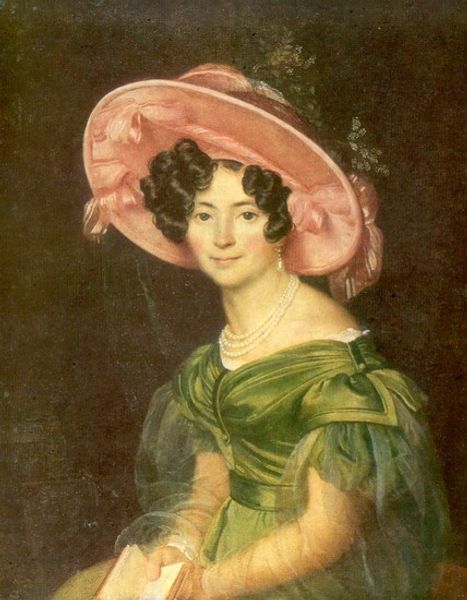
painting, oil-paint
#
portrait
#
face
#
painting
#
oil-paint
#
portrait reference
#
portrait head and shoulder
#
romanticism
#
animal portrait
#
animal drawing portrait
#
portrait drawing
#
facial study
#
history-painting
#
facial portrait
#
academic-art
#
lady
#
portrait art
#
fine art portrait
#
digital portrait
Copyright: Public domain
Editor: This is "Lady Lea" by Thomas Lawrence, an oil painting. The soft focus makes it feel like a memory, or perhaps even a dream. How do you interpret this work, considering its artistic and cultural significance? Curator: Lawrence captures a certain... ephemeral beauty, doesn't he? Notice the almost Grecian simplicity of her hairstyle, echoing neoclassical ideals, even if it's rendered with romantic softness. It suggests an aspiration, a connection to a glorious past, but filtered through contemporary sensibility. Do you see how the slight asymmetry contributes to a sense of lived, real experience, rather than idealized perfection? Editor: I do. The uneven lighting almost suggests she is caught between two worlds – the idealized and the real. Does this reflect a tension in the culture of the time? Curator: Precisely. The symbolic weight of portraiture then wasn't just about likeness; it was about constructing identity and conveying social standing. But also conveying an emotional inner world. The gaze, the pose…it’s all carefully calibrated to evoke a specific response. Do you think she succeeds? Editor: Absolutely. The effect is a delicate balance – reserved yet engaging, confident, and vulnerable. Curator: It's a potent combination, revealing much about how women of the era wished to be seen – and perhaps, how they wished to see themselves. Seeing through symbols and imagery allows one to interpret cultural continuity, especially viewing portraiture through the lens of social and cultural significance, beyond pure likeness. Editor: It’s fascinating how much a single portrait can communicate about societal values. Thanks, I'll keep a closer eye on these subtleties from now on. Curator: Indeed, it's these symbolic layers that bring these paintings to life, beyond the surface.
Comments
No comments
Be the first to comment and join the conversation on the ultimate creative platform.
